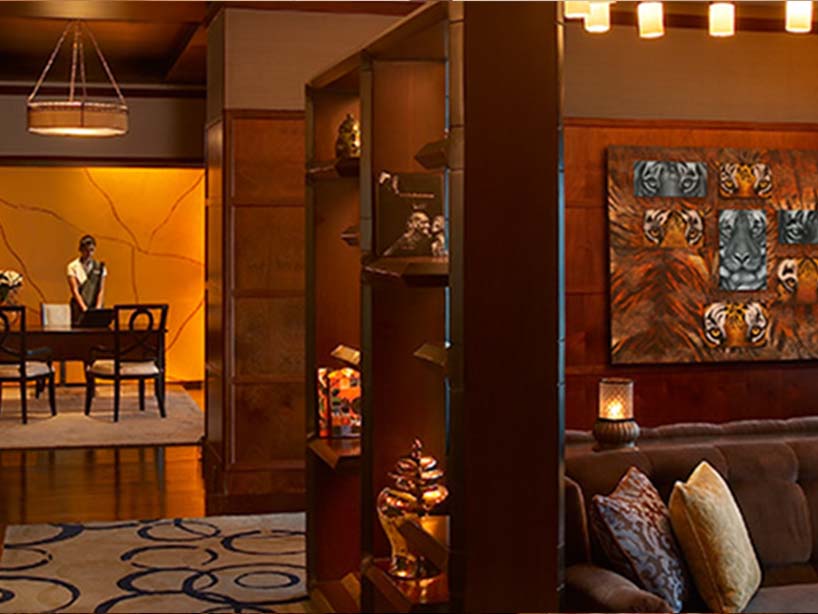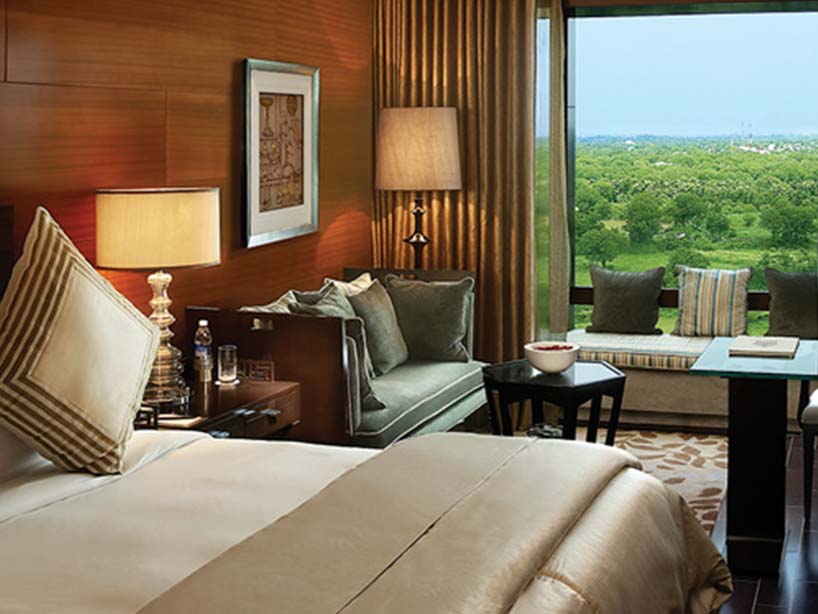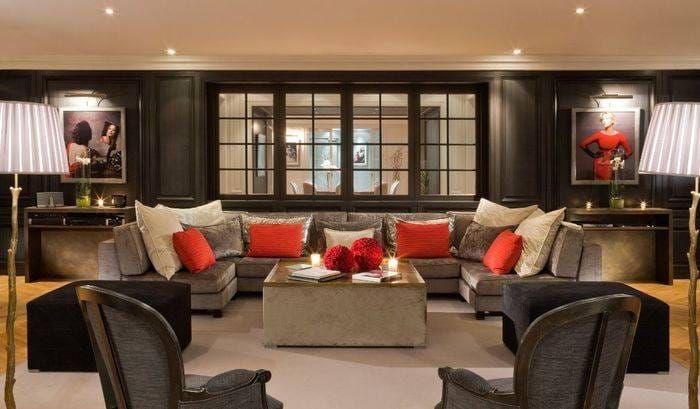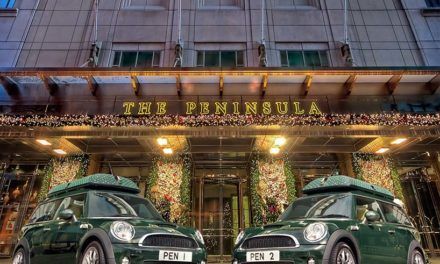I attended the ILTM Conference in Cannes, where I had the occasion to discover some extraordinary hotel brands. Luxury hotel brands often play a fine gamble between maintaining a core brand identity through a historically iconic collection while seeking to reinterpret and translate that identity into new locations around the world. One excellent example of a global luxury hotel brand that has done this with great success is the Indian brand Leela Palaces.
A friend of mine told me that Leela Palaces is a great study in the art of hospitality because they are skilled at anticipating guest’s needs. She told me a story about how she went to the hotel’s swimming pool and the staff team delivered her towels, water and elephants; as soon as she needed something, she had only to place the elephant to alert the staff team. I was eager to learn more about this brand’s unique art of welcoming.
Below you will find my interview on this subject with Vivek Nair, CEO of Leela Palaces & Resorts.
How do you define the art of welcoming at Leela Palaces?
We have a saying in our country that roughly equates to “The guest is god.” Welcoming someone is almost like an act of worship. You are welcoming them into your home, into your heart, into your family—so it is a very warm welcome. Of course, there are all the elements of a classic floral welcome with deep sense of courtesy and warmth. But really, you are welcoming somebody into your home, and that is what we encourage our people to do—try and welcome somebody into your heart because it’s a feeling.
We are fortunate that in India, there is an innate sense of hospitality. We don’t have to train people so much because there is a desire within them to please. It makes them happy when they see that the guest is happy. We are fortunate that we have that ability in our staff. What we do is try to encourage them—we give them training, which has more to do with phraseology. We should try to welcome people using certain phraseology. I think what our guests tell us is that as much as they love the grandeur and opulence of our hotels, what stays with them and what they really talk about is the warmth of our staff and how they were treated. For instance, when a guest stays at our hotel in Udaipur, it’s a glittering palace so they might take hundreds of pictures, but what they will remember is how nice the staff is. That gives us a positive feedback, that we are doing something right.
How do you motivate your staff to bring the best of themselves?
I think we don’t have to manage them; we have to inspire them and lead them by personal example. You cannot teach someone to smile. You can only smile at them, and they will smile back. That’s really the way. You inspire your team, and the leadership team is the leader of this particular task.
In France, we have a very specific definition for Palaces, for which we have created a special label, distinct from 5-star hotels. Is this the case in India? What is your definition of a Palace in an Indian and global context?
In India, we have 5-star deluxe category, but we don’t have a Palace category.
The first thing about a Palace is that it should make the guest feel royal. That is the most important thing. It’s not about the architecture or the grandeur, the gold gilding everywhere…it’s about making the guest feel like a king or a queen.
Leela Palaces are modern palaces; they are not historical palaces. We are inspired by historical palaces because what we try to do is render a tribute to the architectural tradition of the city that the hotel is in in order to create a sense of place. If you are in Chennai, you will have the Chettinad Palace. If you are in Bangalore, it will be the Mysore Palace. Elements of that is what we are trying to do.
A modern palace also helps because you want to have the right facilities, such as the shower pressure or the air conditioning. You want everything to work, which in an old building is not always possible. In India in particular, we can work a sense of romance thanks to its heritage. We try to incorporate all of those elements into the guest experience, which helps whether it’s in the public areas of the hotel or in the rooms or even in the service sequence. For example, if you come to our hotel in Udaipur, it’s a beautiful palace; you might gaze at it—and then suddenly you will find yourself in a shower of rose petals, which a person will always remember. You may not remember the gold, but you will remember being greeted by a shower of rose petals. Those are the elements that go into making people feel like royalty: walking on a carpet of fresh rose petals.
How do you integrate technology into your hotel?
Technology is omnipresent. We all rely on technology. But our philosophy is that technology should be as invisible as possible. It should enable things, but it should not be in your face. It should help you and make you as comfortable as possible, but it should not be visible. At the heart of luxury is the human touch. The human being is helped by technology but is never replaced by technology. So no robots—not for a long time.
Can you describe the history of your brand?
The brand was founded by our Founder-Chairman, who was a great man. We lost him three years ago at the age of 92. He started the first hotel at the age of 65. He was not an hotelier; he was an entrepreneur with successful business innings in the clothing/apparel business. He was always fond of hotels because he used to stay at the world’s best hotels. When the opportunity came, he said to himself, “I’ll build a hotel.” So the first hotel was built 30 years ago in Mumbai, on a site where he used to own a factory. Suddenly, the airport location shifted, so the factory was close to the new airport, which presented the tremendous opportunity to build a new luxury hotel next to the new airport. It was an amazing success from day 1.
The second hotel that he built was in Goa and the third hotel was in Bangalore. At that time, the Bangalore had the Oberoi and the Taj. Both were very small hotels; the Oberoi had about 110 rooms, and the Taj had 117 rooms. Captain Nair, my Chairman, built a hotel of 300 rooms. And he built what would become the first palace hotel, which was a tribute to the Mysore Palace Hotel. Everyone thought he was crazy because they said that the market didn’t need it. His thinking was that you don’t build for today; you build for tomorrow or the day after tomorrow. So he was really an entrepreneur and a visionary.
Lo and behold, Bangalore suddenly appeared on the global radar because it became the software capital of the world and this hotel went on to do brilliant things. It had an 80% occupancy, a $400 rate, etc. In many ways, this hotel, the Leela Palace Bangalore became a poster child for Indian hospitality. The reason why chains like Four Seasons, Peninsula, or the Ritz-Carlton, which had never looked at India earlier, were suddenly curious and keen to have a presence in India was because they found an opportunity to sell a hotel at $400 per night. Leela Palace Bangalore is the hotel that made that possible. For us, we were delighted to see that a Leela Palace could have this kind of success, so we built more palace hotels in Udaipur, Delhi, and Chennai.
We are a young company. I joined the company 12 years ago, and we had 3 hotels at the time. Today we have 9, we own 5, and we manage 4. Going forward, we have about 4 management contracts signed in India, and we are very hopeful to take the brand overseas in 2018. Fingers crossed.
#ILTM #luxuryHotel #delportehospitality
The Leela – Gurugram – Room
Known for his international expertise on luxury hotels through his magazine, Laurent Delporte shares his vision and experiences in the world of hotels on his site DELPORTE Hospitality. He decodes the behind-the-scenes action in the sector: from food and beverage facilities, accommodations, architecture, to the quality of services. He offers interviews, advice, and articles as pragmatic resources that industry professionals and private individuals can refer to in their search for information.


 HOME
HOME













